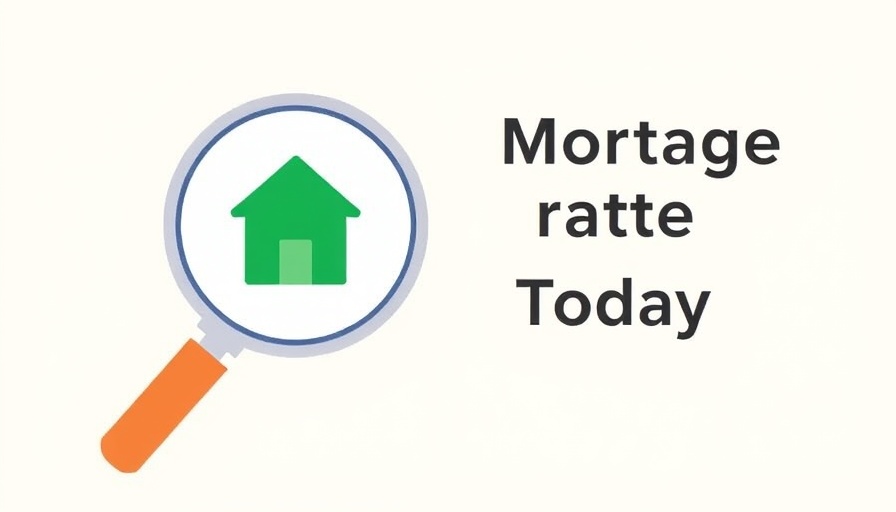
Decoding Recent Trends in Mortgage Rates
The recent rise in mortgage rates, now averaging 6.35% for a 30-year fixed rate, signals a complex balancing act in the housing market. Just last week, many anticipated a favorable dip following a Federal Reserve rate cut, but instead, we're witnessing an uptick. Understanding the forces at play is essential for small business owners and managers considering investments in property or seeking to optimize financial strategies.
The Fed’s Role in Mortgage Rates: A Closer Look
The Federal Reserve does not directly set mortgage rates but influences them through monetary policy. When the Fed lowers the federal funds rate—recently by 25 basis points—it often leads to better borrowing conditions. However, lenders quickly adjust their rates based on market conditions and future expectations. The recent bond yield increase points to investor confidence, suggesting a robust real estate market that could ultimately influence borrowing costs.
Navigating the Bond Market: What's at Play?
It’s vital for business leaders to understand the relationship between treasury bonds and mortgage rates. Rising yields on 10-year treasury bonds typically indicate a cycle where confidence in the economy boosts interest rates across various sectors, leading to higher mortgage costs. As bond prices fall, the yield rises reflecting market optimism that might be counterintuitive for immediate homebuyers. Balancing these financial signals can determine the timing for entering the property market.
Current Market Dynamics: A Mixed Bag
Despite flat existing home sales, experts remain hopeful about the market’s trajectory. The National Association of Realtors highlighted optimistic inventory trends and a slight uptick in annual sales in certain regions. Understanding these fluctuations is crucial for small business owners—especially those in related sectors like real estate or lending—as they may impact decisions on investments or expansions. Keeping an eye on local sales trends can also provide insight into broader economic conditions.
Strategizing for Homeownership: Practical Insights
For small business owners contemplating property investments, it's essential to consider the timing of your mortgage applications. Actively engage with lenders to hunt for competitive rates before they climb higher in response to forecasts. Consider factors beyond just rate comparisons, such as loan terms and potential market shifts that could affect your financial health.
What Smaller Businesses Can Do Now
Engagement in the property market is not solely for larger corporations. Small business owners can leverage this period by investing in real estate while interest rates are still manageable. Explore options for refinancing existing properties, considering improvements needed to attract more business or even residential clientele. Collaborating with financial advisors could provide the edge you need in a fluctuating market.
Conclusion: Seizing Opportunities Amidst Uncertainty
The fluctuations in mortgage rates may seem daunting, but they present unique opportunities for strategic decision-making. As a small business leader, aligning your financial strategies with these market signals can position you for sustainable growth. Embrace the insights shared here and act proactively to harness the benefits. Start exploring mortgages today and take the first step toward securing financial opportunities.
Stay informed and agile in your decision-making as you navigate these favorable shifts in the market. Let today’s insights empower your next steps—for your home or your business.
 Add Row
Add Row  Add
Add 




Write A Comment